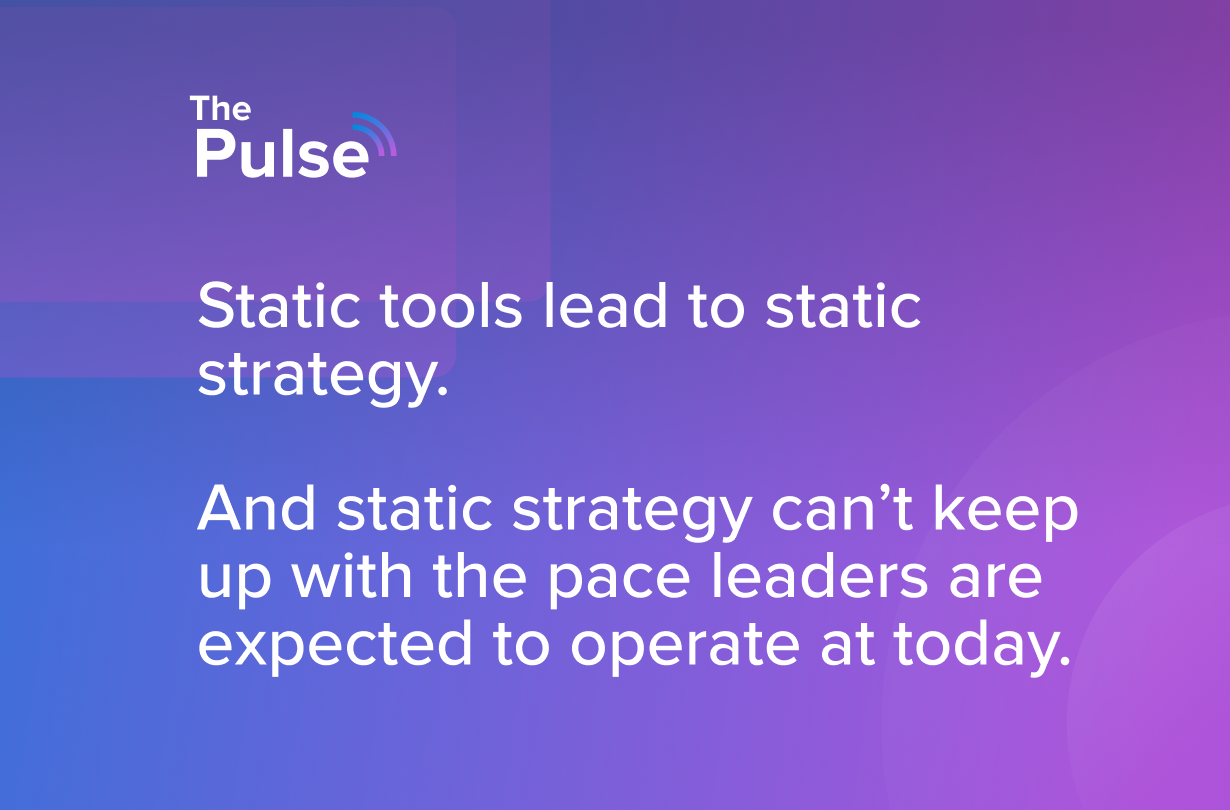
Running a business without a strategic plan is like flying blind or playing the lottery. You can cross your fingers, think positive thoughts, and hope everything works out, but that’s a dangerous game. And it’s one that can jeopardize your organization in the short- and long-term future.
Today’s blog is brought to you by the numbers 3, 5, and 7. In it, we’re going to introduce you to the basics of strategic planning and answer the following questions:
- What are the 3 types of strategic planning?
- What are the 5 essential components of strategic planning?
- What are the 7 steps of the strategic planning process?
We’ll address these one at a time. Let’s get started with the 3 types of strategic planning.
What Are the 3 Types of Strategic Planning?
There are many different types of strategic planning, mainly defined by their scope and outcomes:
- Business planning: This is the most common type of strategic planning, and it involves driving desired outcomes—e.g., gaining new customers/subscribers, meeting revenue targets, etc. Strategic business planning may occur on a regular basis, like quarterly or annually.
- Corporate planning: This strategic planning type focuses primarily on extending the business’s reach to a very high level. It refers to strategies like mergers and acquisitions, for example.
- Functional planning: This is an internal, organizational-type planning process that supports the business plan. This work typically involves teams like Marketing and HR, who work to ensure that the proper people, resources, and processes are in place for strategic planning to be effective.
What Are the 5 Essential Components of Strategic Planning?
The essential components of strategic planning include a vision, values, outcomes, accountability, and measurement. Ask yourself these questions to guide your planning:
- Vision: What is the company’s mission and vision, and how will our plan align with them?
- Values: What are the company’s values, and how will they impact how we approach this?
- Outcomes: What are the highest-priority outcomes we need to drive efforts toward?
- Accountability: Who is responsible for strategic planning? Who is responsible for executing the plan? What happens if our desired outcomes aren’t achieved?
- KPIs: The best goals are measurable. What data points are we trying to impact, and how do we measure them?
Next, let’s break down the 7 steps of strategic planning. As you can imagine, there will be a lot of variation depending on your industry and the focus of your plan, so we put together a general strategic planning process model you can use as a template.
What Are the 7 Steps of the Strategic Planning Process?
Use and adapt this strategic planning process model to outline your own plan. Taking into account the wide variety of possible applications for this process, we’re going to focus each step on the question or questions you should be asking, reflecting on, and strategizing around.
Step 1: What Are Your Mission and Vision?
Your organization’s mission and vision statements should inform the “why” behind your strategic planning. As much as possible, any type of strategic plan should align with—and work to further—the company’s mission and vision. While there may not always be a 1:1 connection between a strategic plan and the specific wording of your mission and vision, the two definitely shouldn’t be at odds with one another.
Step 2: Where Are You At Now?
Before you can set realistic goals and begin strategic planning in earnest, it’s important to take a long, hard look at where you currently stand. Are you delivering on your mission and vision? To really understand your current position, there are internal and external considerations, and these are often referred to as the four components of SWOT analysis:
- S: Strengths as a business
- W: Weaknesses as a business
- O: Opportunities for improvement or growth
- T: Threats to improvement or growth
Considering both internal and external factors helps ensure that your strategic plan is realistic within the real-world context in which your business operates. Understanding where you currently stand will also help build urgency/meaning behind the strategic plan, making it easier for stakeholders to understand why the plan’s objectives are reasonable, attainable, and likely to help the business achieve its larger goals.
Step 3: Where Do You Want to Be?
The next strategic planning step is to set goals. Specific goals might apply to individual teams or the business as a whole. While your mission and vision are likely to be fairly broad (to apply to all facets of the business), your strategic plan’s goals need to be specific and measurable. The SMART objective framework provides a great template for goal-setting:
- S: Specific
- M: Measurable
- A: Achievable
- R: Relevant
- T: Time-based
Collectively, the SMART framework helps ensure that goals are reasonable and easily understood, success is defined and measurable, the benefits or outcomes are clear, and there is a specific time frame for achievement.
Step 4: What Matters Most?
Next, you’ll want to figure out which objectives or goals are the most important or time-sensitive, and prioritize/order them accordingly. When prioritizing objectives, you might consider factors such as:
- Which will have the greatest impact on the organization as a whole—either in terms of furthering the mission and vision or hitting specified targets (like customer acquisition or revenue)?
- Which will impact our customers the most, in a positive way?
- Are any objectives time-sensitive, either from a competitive or long-term perspective?
- Do some objectives need to be achieved before others can be worked toward?
Step 5: How (and When) Can You Get There?
This is where you start plotting out exactly what it’s going to take to achieve your goals. It includes strategy elements like specific tactics, timeline, and delegation of responsibilities. Depending on the nature of the organization and/or its goals, this may be a process that’s fairly straightforward, or it may involve significant collaboration among many stakeholders.
As you map out the strategy, keep specific objectives in mind. As much as possible, define the timelines, milestones, or outcomes that will signal whether a specific objective has been achieved or not.
Step 6: Are You Ready to Implement the Plan?
Next, it’s time to implement the plan. Obviously, this section could be incredibly lengthy if we tried to cover even a fraction of the practical, industry- and organization-specific steps of actually implementing the strategic plan.
Here are a few of the most important considerations for your strategic management process:
Communication
From the start, establish lines of communication—and keep them open. Make sure everyone involved knows exactly what the objectives are and why they are considered critical to the mission and vision. Don’t assume everyone you’re counting on will instinctively know exactly what the plan is and how they’re expected to support it.
Strategy Mapping
As much as possible, create “micro-strategy” maps for individual objectives, outlining the people, steps, and resources needed for achievement. This is an exercise in blind spot reduction, making it vital to solicit constructive feedback at all stages of the process.
Measuring and Reporting
When appropriate, determine relevant KPIs for each stage of the plan. Plan to keep an eye on the most important metrics and set a regular cadence for reviewing the progress.
Step 7: What Happens Next?
Throughout and beyond the actual implementation of the plan, there are plenty of opportunities to learn. What are the next steps? A good strategic plan is dynamic, making planning tools that enable on-the-fly, data-backed adjustments a virtual must. What did you learn from Steps 1 through 6 that can help you strategize more efficiently and effectively next time?
Your Plan, Our Platform
A lot goes into your strategic planning process, and the stakes can be high. Don’t make it more complicated than it needs to be! Elate streamlines this work, with all the necessary strategic planning process steps brought together in a single platform. It’s an all-in-one solution for SaaS companies and other high-growth businesses who are ready to turn their vision into a concrete, can’t-miss plan. Align the essential components, track performance, and leave the complications behind!
Learn more about our strategic planning tools or drop us a line to schedule a demo today.


